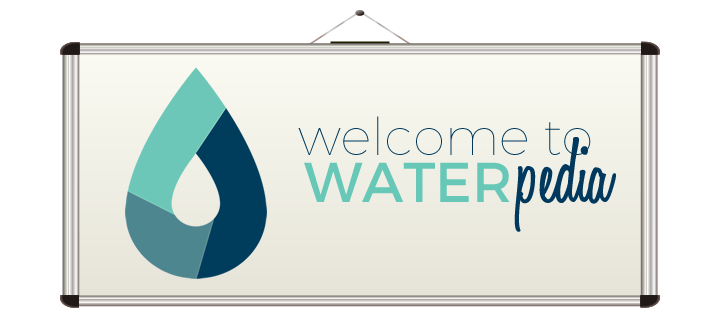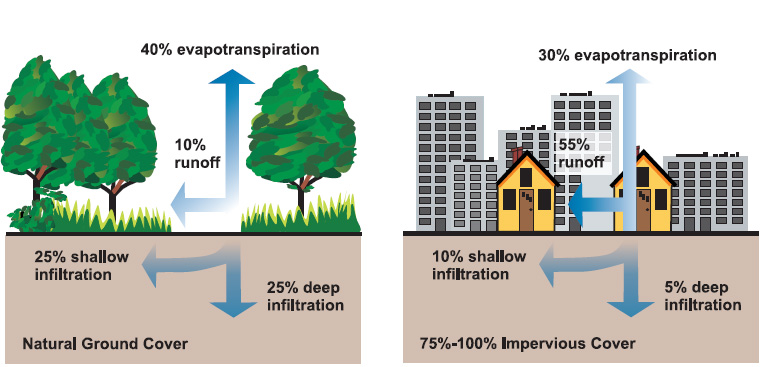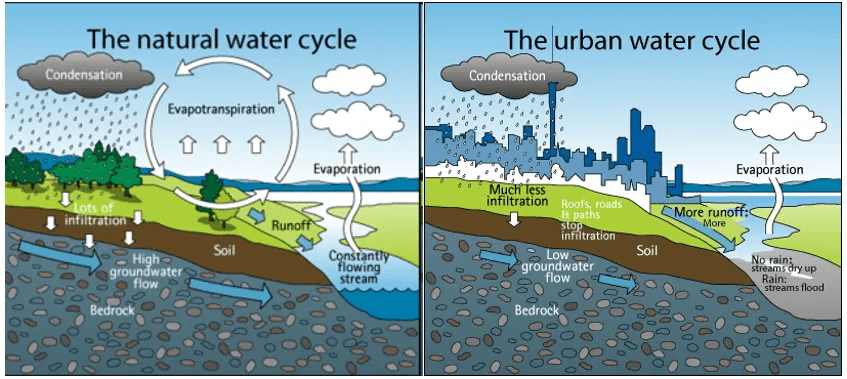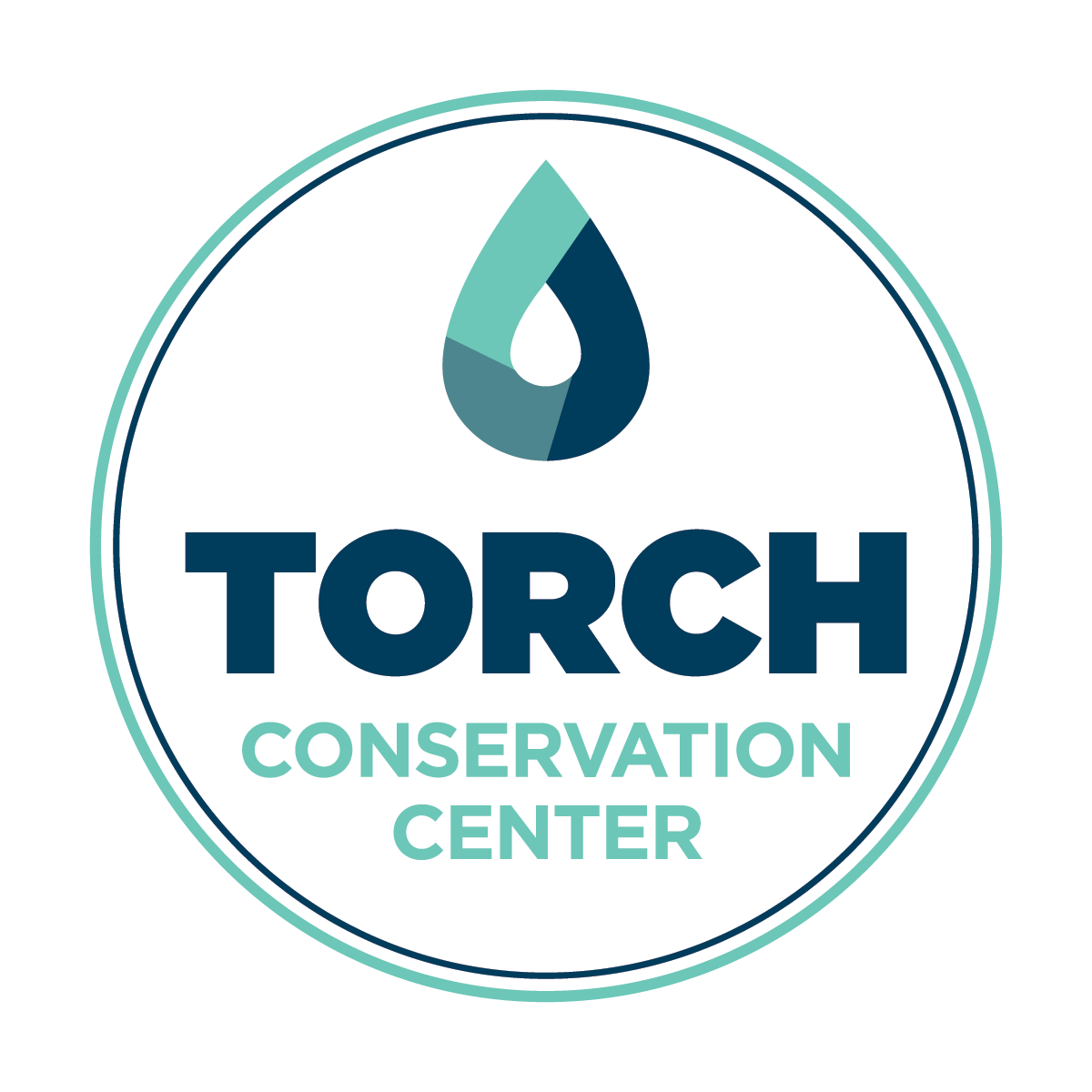
Stormwater
Stormwater is the number one source of pollution in Torch Lake.
Key Facts
When it rains or snow melts, water runs off the land. It’s called stormwater or runoff.
- Stormwater can do one of three things:
- Soak into the soil down into the aquifer
- Collect in depressions and puddles where it evaporates into the air
- Flow downhill into streams and the lake
- The soil in our woodlands and meadows absorbs most of the stormwater. The roots help hold the water, giving it a chance to soak into the ground. This is a good thing.
- In our Torch Lake Watershed, most of the soil is sandy and the topsoil layer is usually less than an inch deep, so water filters quickly into the ground. This is also a good thing.
- When the ground is covered by hard, non-porous surfaces like buildings, paved roads and driveways, the stormwater runs off the land quickly and into streams and our lake. This is not-a-good thing.
- Small changes to the land can cause big changes in the amount of water, sediments, nutrients &toxins that end up in our streams and the lake.
Did you know?
People clearing the land to build homes, garages, farms, businesses, roads, driveways, or even landscaping can unkowingly create stormwater pollution.
- When land has been cleared, water runs off the land too quickly instead of soaking into the ground or evaporating. So one type of stormwater pollution is erosion. The water can carry away the soil and sediments along the shores of streams or the lake.
- Unfortunately, stormwater will carry anything in its path, like the nutrients that we put on our lawns and gardens, or the nutrients that come from old, leaky septic tanks.
- Toxins in the ground are also carried by this runaway water, so if your neighbor spills gas while filling his lawnmower, it will also be carried into our lake. Other common toxins include oil, grease, pesticides, herbicides and cleaning products.
- Stormwater is also called non-point pollution, because it comes from everyone’s property, not from one specific location.
Runoff: Natural and Developed Landscape

Image source: U.S. EPA
- An increase in stormwater can decrease our drinking water supply. When more stormwater runs off our hard surfaces, then less water is able to filter into the ground and replenish our drinking water supply.
Water Cycle: Natural and Urban

Image source: Greater Auckland
Show
You Care
We know you want to enjoy the lake for many years (and generations) to come. So, we’ve put together a list of simple steps you can take to reduce the nutrients, sediments and toxins flowing into the lake and its streams.
A lake is a reflection of its watershed. The more natural the landscape, then the less pollution flows downhill into streams and the lake. Learn all about it in TRUE BLUE Living . . .
To keep Torch Lake clean and clear, maintain a natural landscape wherever you live in the watershed.
- Minimize the size of your grass lawn.
- Maximize the number of native plants in your yard.
- Plant trees every year.
- If you live along a creek, stream or lake, leave at least 50% of your shoreline natural and don’t mow within 10 feet of the water.
Don’t use commercial fertilizer, use compost instead.
Phosphorus in fertilizer is one of the greatest threats to Torch Lake, and the easiest to prevent. Phosphorus can enter Torch Lake and the streams that feed the lake in stormwater run-off.
Once phosphorus enters the lake, aquatic plants grow, including small, microscopic algae. This leads to decreased water clarity, algal blooms and depletion of the dissolved oxygen supply in the water.
Get a soil test kit from MSU Extension office in Bellaire ($25) BEFORE you fertilize. Follow the recommendations for fertilizing your soil type.
Often, phosphorus is not needed for your lawn and garden. To tell how much phosphorus is in a fertilizer, look for 3 numbers separated by a dash on the package. The numbers tell you the percent of nitrogen-phosphorus-potassium (in that order) contained in the fertilizer.
Your septic system is also a source of phosphorus, so it’s important to maintain it.
Be sure you pump it at least every three years.
Links
Rain Gardens
Stormwater
Nutrient and Sediment Content of Stormwater in Traverse City
Eutrophication
WATERpedia: the “One-Stop Shop” for Water Science A-Z
A-E
F-M
N-S
T-Z
Don't just wish that Torch Lake will stay blue.
Choose a water-friendly lifestyle - make a difference!
About
Social
Subscribe to TRUE BLUE News
Follow us on Facebook
Share a favorite photo with us on Instagram (#truebluetorch)
